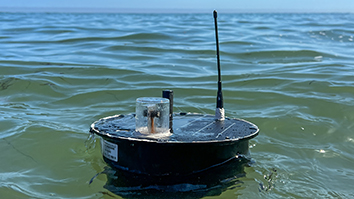Citation
Varney, R. H., Solomon, S. C., & Nicolls, M. J. (2014). Heating of the sunlit polar cap ionosphere by reflected photoelectrons. Journal of Geophysical Research-Space Physics, 119(10), 8660-8684.
Abstract
Photoelectrons escape from the ionosphere on sunlit polar cap field lines. In order for those field lines to carry zero current without significant heavy ion outflow or cold electron inflow, field-aligned potential drops must form to reflect a portion of the escaping photoelectron population back to the ionosphere. Using a 1-D ionosphere-polar wind model and measurements from the Resolute Bay Incoherent Scatter Radar (RISR-N), this paper shows that these reflected photoelectrons are a significant source of heat for the sunlit polar cap ionosphere. The model includes a kinetic suprathermal electron transport solver, and it allows energy input from the upper boundary in three different ways: thermal conduction, soft precipitation, and potentials that reflect photoelectrons. The simulations confirm that reflection potentials of several tens of eV are required to prevent cold electron inflow and demonstrate that the flux tube integrated change in electron heating rate (FTICEHR) associated with reflected photoelectrons can reach 109eV cm−2s−1. Soft precipitation can produce FTICEHR of comparable magnitudes, but this extra heating is divided among more electrons as a result of electron impact ionization. Simulations with no reflected photoelectrons and with downward field-aligned currents (FAC) primarily carried by the escaping photoelectrons have electron temperatures which are ∼250–500 K lower than the RISR-N measurements in the 300–600 km region; however, simulations with reflected photoelectrons, zero FAC, and no other form of heat flux through the upper boundary can satisfactorily reproduce the RISR-N data.


